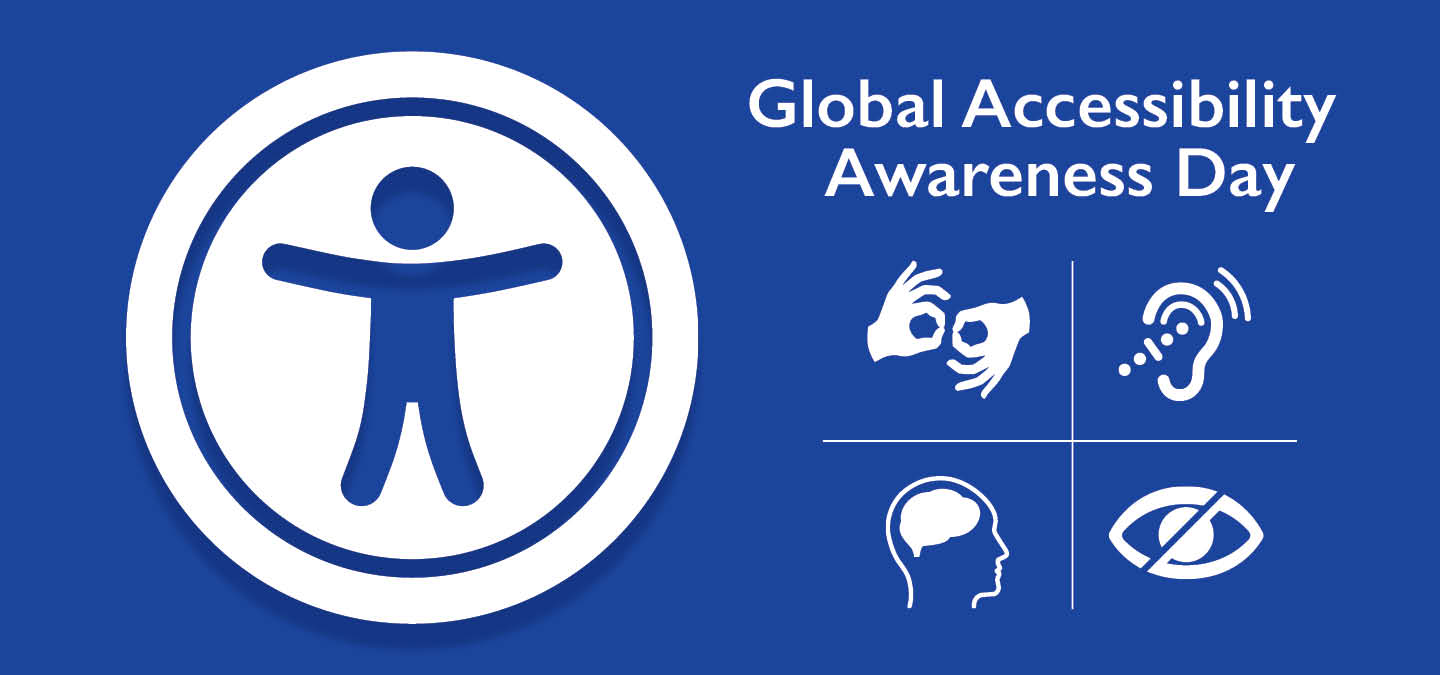Three Easy Ways to Improve Accessibility for Everyone

Overview
In honor of Global Accessibility Awareness Day (GAAD), Information Technology and the Office of Student Accessibility want to share some helpful resources with our Pepperdine community.
What is Digital Accessibility?
In general, accessibility is the practice of making resources available to all people. Digital accessibility is the practice of making digital content and tools available on or from different devices, such as computers, tablets, mobile phones, and assistive technologies. This means that people can use and understand the information presented to them. As an academic institution, Pepperdine University has moral and legal obligations to make the content that we create, publish, or require to be accessible to our community.
Who is responsible? (Spoiler alert: All of us!)
Pepperdine University is committed to web accessibility. Web accessibility is just one part of digital accessibility. Of course, the responsibility doesn't just fall on "web" editors. It rests with all of us who create or require any content for our students, faculty, staff, alumni, and others in our global community.
Let's focus on the creation of content. Do you create content that members of our community may read, watch, listen to, process, or interact with? If yes, then you need to be mindful of digital accessibility. From email messages to presentations, and from spreadsheets to videos and beyond, we are all responsible to create inclusive content.
Where to begin?
The concept of accessibility can feel overwhelming to many of us. Thankfully, there are very small, easy things that we can do today to dramatically improve the content that we create or edit. We'll outline three areas to act as a starting point.

Use Formal Headings
From grade school through college, we learned the importance of outlining our written work. Just as these outlines help us organize our thoughts when we're writing, headings help the people reading our work understand the logical order and structure of the content. Plus, headings offer a way for assistive technologies to navigate our content, too.
The Do's
- Do use formal heading options, like "Styles" in Microsoft Word or Google Docs
- Do structure content to flow in a logical, hierarchical reading order
- Do write clear, concise headings that quickly introduce the content that will follow
The Don'ts
- Don't skip heading levels when diving into details (e.g., don't jump from Heading 1 to Heading 4)
- Don't manually format text to mimic a heading; use the formal heading features instead
- Don't misuse heading styles as a shortcut to format non-heading text (i.e., don't apply a heading to a paragraph just to make the text more visible)
Learn More about Heading Styles
- Apply Styles in Microsoft Word
- Change the text style in Google Docs
- Edit Page Content for Pepperdine Websites (see "How to Apply a Heading Level")
- Use the Accessibility Checker in our Courses LMS
- W3C: Headings in Page Structure
- WebAIM: Headings

Choose Text Fonts and Sizes
Fonts can be a lot of fun. They offer a way to express our creativity or personality on the page. However, our goals of making our content more engaging can be thwarted when the text size is too small or the font itself is too busy or difficult to read. To help our sighted readers, please pay attention to the font and font size of your text.
Choosing Fonts
In general, choose sans serif fonts when possible, like Source Sans, Arial, or Helvetica. Limit serif fonts to larger headings, if necessary. Examples of serif fonts include Lora, Times New Roman, or Garamond. Avoid or limit the use of script fonts, such as handwritten styles, cartoonish styles, or over-stylized designs.
Choosing Font Sizes
Although there isn't currently a minimum font size specification, the general practice is to avoid sizes below 12 point, with a preference for 12-16 point (or 16-22 pixels) for standard text. Headings should be larger, such as 18 point or more (24+ pixels), with sizes varying by heading level to show the level of importance. You may review Pepperdine's Website Typography for examples.
The Do's
- Do choose clean-looking fonts, preferably sans serif
- Do set text to reasonable reading sizes
- Do set headings larger than the body text and proportionate to the heading levels
The Don'ts
- Don't clutter a page with too many fonts (limit to two typefaces if possible)
- Don't choose busy, complex, or hard-to-read fonts
- Don't set heading sizes too close to body text sizes
Learn more about Accessible Fonts
- WebAIM: Typefaces and Fonts
- British Dyslexia Foundation: Dyslexia-friendly style guide
- Siteimprove's "How to choose a font for accessibility"
- Google Material Design: Type Classification

Add Image Descriptions (ALT Text)
Inserting images on a webpage, syllabus, or document can draw attention and engage sighted viewers. However, without adding descriptions of your images, you are leaving the audience members who rely on screen readers or have visual impairments without a way to understand the context and purpose of the image. Serve all of your audience members by providing alternative text descriptions (ALT text) for your images or visual content.
The Do's
- Do enter alternative or ALT text descriptions for your images, graphs, or charts
- Do keep ALT text brief and descriptive
- Do emphasize the purpose of the image in the context presented
The Don'ts
- Don't use phrases like "image of" or "picture of" as screen readers will announce the object as an image
- Don't use abbreviations, shorthand, or "insider knowledge" which may be unfamiliar to or confuse your audience
- Don't repeat the same information already present on the page
- Don't use images to convey text content or data
Learn more about ALT Text
- WebAIM: Alternative Text
- Harvard University Accessibility: Write good Alt Text to describe images
- W3C Web Accessibility Initiative: Images Tutorial
Closing Thoughts
Small changes can have big impacts. By incorporating the above three steps into your everyday processes for creating content, you can dramatically improve the experience of our students, faculty, staff, and other community members.
Let's celebrate Global Accessibility Awareness Day by doing our part and making a more accessible Pepperdine.
Additional Resources
The three steps covered in the above blog post are just the beginning. Learn more about accessibility at the following links: